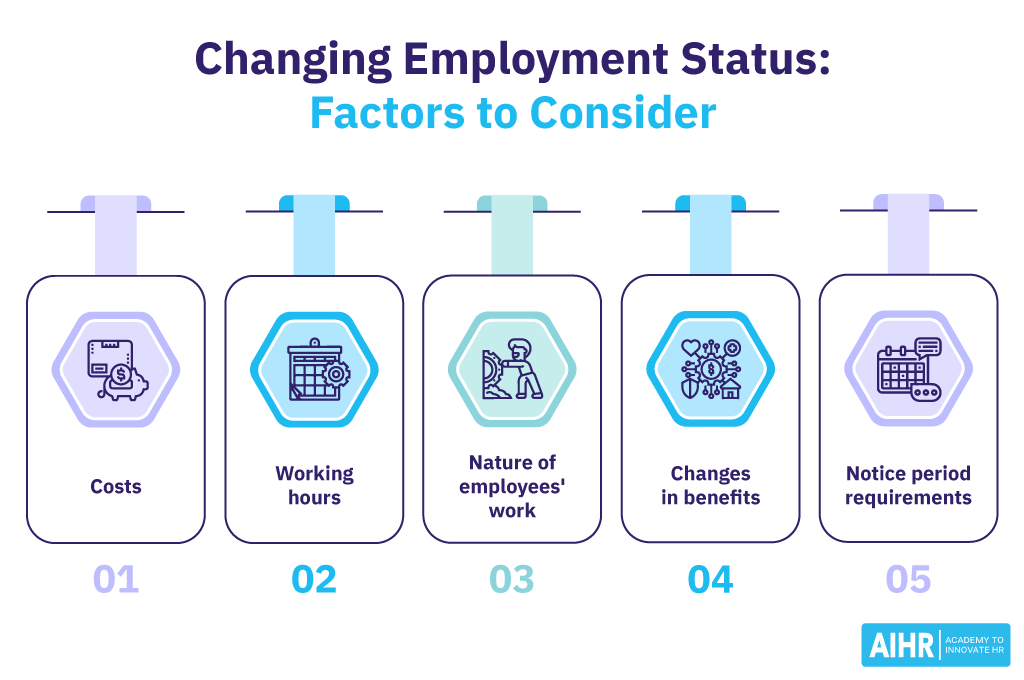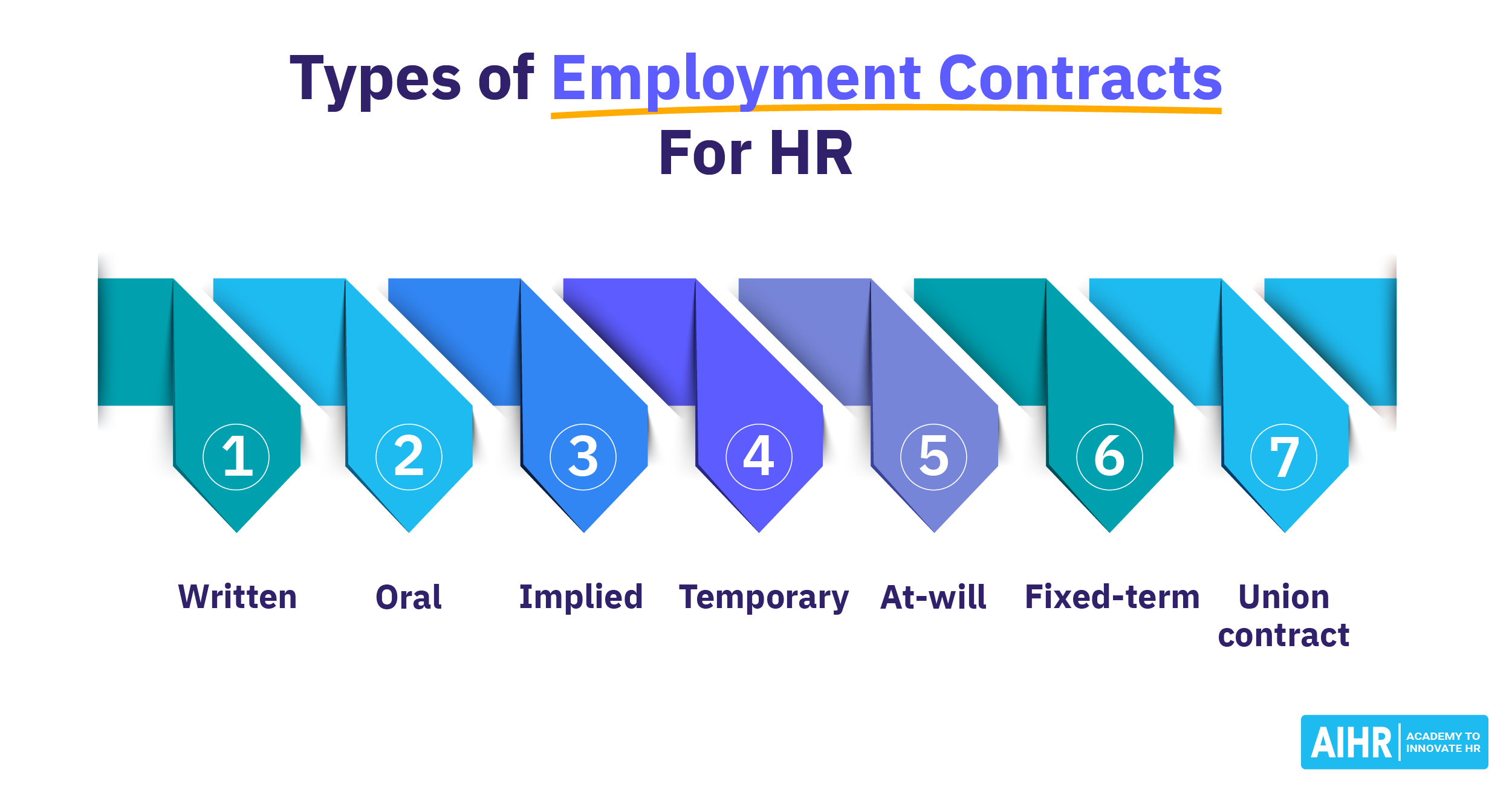Employment Status
What is employment status?
Employment status is a general term that describes the relationship between an employee and an employer. However, the term can also have a more detailed meaning depending on which country you’re referring to.
Generally, employment status lays out the factors that define the type of employee, their rights and protections, and the responsibilities of an employer. As an HR professional, it’s wise to clearly understand what it means in your country to ensure your organization:
- Remains compliant
- Attracts and retains the best talent and;
- Ensures all your employees know their job expectations.
Employment status in the US
In the US, employment status refers to a written contract between an employer and an employee indicating whether the work is on a part-time, full-time, contract, or apprenticeship, and more.
Unlike other countries, the term is not strictly defined in the US. This is because the rights of employees are relatively constant regardless of who one has employed.
Employment status in Canada
In Canada, employment status looks beyond a written contract between an employer and an employee.
According to the Canada Revenue Agency, the nature of the working relationship between an employer and employee also determines their employment status. This will, in turn, determine whether an individual is categorized as an:
- Employee, or
- An independent contractor.
Employment status in other countries
In the UK and in some other countries in Europe, employment status refers to the legal status of an individual at work. Just like in Canada, this also affects employees’ rights or benefits.
Depending on the nature of the work, an employee can be classified as:
- Worker: Works for a company or an organization on a seasonal basis.
- Employee: Recruited directly by a company or an organization.
- Self-employed: People running their businesses like independent contractors.
Types of employment status
When hiring, there are many types of work arrangements that an employer and employee can agree to work with, including:
Casual
Casual employment describes a situation where an employee is hired on a need-to-need basis. This means an employee is only guaranteed work when the need arises.
In this arrangement, there is no expectation or guarantee for more work in the future. When a casual employee is not working for your organization, you have no active relationship. This implies the worker cannot file a personal grievance toward your organization regarding an unjustified dismissal when causal employment is not required.
Casual workers are only remunerated for the number of hours they put in. They don’t get paid for holidays.
Part-time
According to the US Bureau of Labor Statistics, part-time employment status refers to an arrangement where an employee works for less than 34 hours a week. Generally, these workers get paid on an hourly basis.
Part-time employees can be beneficial to organizations because they are more flexible. For example, you can have such employees work for only 10 hours or up to 28 hours.
Full-time
Full-time employment refers to an arrangement where an employee is hired on permanent terms of service. Such an employee typically works for 35 or more hours per week and has a written employment contract.
The majority of exempt, salaried employees usually fall into this type of employment status. Full-time jobs are highly sought-after and, therefore, tend to attract top-tier talent.
Seasonal
Seasonal employees are hired for a specific season or peak period, common in industries like retail, hospitality, agriculture, and tourism. These positions are temporary and typically do not offer long-term job security or extensive benefits. Seasonal work is often related to holidays or weather-dependent activities.
These positions are ideal for individuals looking for short-term work or those who wish to gain experience in a particular field without a long-term commitment. Employers benefit from the flexibility of adjusting their workforce based on seasonal demand.
When would an employment status change?
The employment status of your employees may not remain the same with time. They will change from time to time.
An employer may initiate the change, or an employee may request changes. Regardless of who instigates the change, as an HR, you need to stay on top of things to ensure you make informed decisions and effect any changes on time and per the law.
Here are a few things that can change an employment status in your organization:
- Move from full-time to part-time and vice versa
- Termination of employment
- Leave of absence
- Resignation
- Retirement
- Layoff.

Changing employment status: What HR should consider
A change in employment status typically means moving an employee from one benefit eligibility to another. It involves changing them from being ineligible to enjoy certain benefits to being eligible, and vice-versa.
These changes can have a huge impact on your employees and your organization. For example, a change can reduce your employees’ productivity or increase your operating budget.
Seasoned HR professionals usually recommend looking at these factors before changing employment status in your organization:
- Costs: Full-time employees cost more than casual and part-time employees since they qualify and are eligible for sponsored health plans. Choose changes that will not jeopardize the financial situation of your organization.
- Working hours: If your organization has fluctuating working hours every week, then part-time employees may be your best fit.
- Nature of employees’ work: If it does not change, then you’re better off keeping your employees in the same status.
- Changes in benefits: Changing employment status has an impact on employee benefits. Be sure to consult state and local laws before implementing any changes.
- Notice period requirements: Some states require an employer to inform the employee in advance of changes impacting their employment status, work schedule, and pay rate. So, check for such requirements to avoid getting sued.
FAQ
The three main types of employment status are:
• Worker: Individuals working under a contract or arrangement which does not need to be written. They are entitled to certain rights like minimum wage and holiday pay but have fewer rights than employees.
• Employee: Employees work under a contract of employment, which can be written or implied. They enjoy all employment protections and benefits and the right to request flexible working hours.
• Self-employed: Individuals who run their businesses and take responsibility for its success or failure. Unlike employees or workers, self-employed people do not have an employment contract but may work under a contract for services with their clients.
Determining employment status is crucial because it defines the rights, responsibilities, and benefits of both employers and employees under labor laws. It affects entitlements such as sick leave, holiday pay, tax obligations, and social security contributions, thereby impacting job security, workplace protections, and overall work-life balance.







